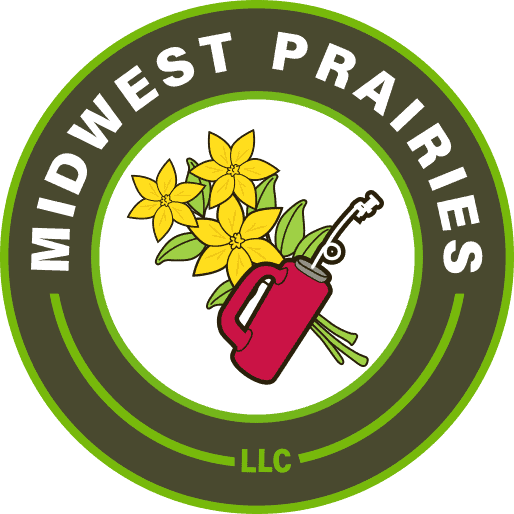Buckthorn Removal
buckthorn
Let Midwest Prairies handle your buckthorn removal
Among the many threats to eastern forests is Buckthorn. In many ways, Buckthorn is the most insidious of threats. It does not kill Oak trees the way Oak wilt does. It does not out-compete the Oaks for sunlight like Black Cherry or Box Elder might. Instead, it stops the reproductive cycle while eliminating other less obvious native species such as sedge and woodland wildflowers, often replacing them with pure stands of Buckthorn.
Buckthorn is comprised of two species in southern Wisconsin, glossy and common. Glossy Buckthorn typically grows in wetter areas and common grows almost everywhere else. Both species were introduced from Europe as landscape shrubs. In Europe, they tend to be fairly inconspicuous. Along with invasive honeysuckle, they are the first plants to leaf out in the spring. Ordinarily, Oaks leaf out in early May giving the spring wildflowers ample time to grow, bloom and set seed. When Buckthorn takes over, these plants are quickly shaded out
Before & After
Buckthorn is the most insidious of threats
Buckthorn also seems to have an allelopathic effect. Studies have shown that germination of native species is significantly reduced when Buckthorn leaf litter is present, suggesting a chemical in the leaves is the cause. As Buckthorn begins to dominate, many other species disappear. As it takes over, native shrubs and young trees will be affected. Eventually, regeneration of Oaks and Hickories will be greatly disrupted. As the mature Oaks die, there will be no young Oaks to succeed them and eventually the woodland will revert to a brush wasteland dominated by Buckthorn, Honeysuckle and a few straggling Elms, Box Elder, and Cherry.
Wildlife such as deer and song birds typically do not use a Buckthorn-dominated woods for various reasons. While a Buckthorn thicket may look dense and healthy to us, to a coyote it looks like an umbrella. Under the canopy is bare soil. Deer make very little use of Buckthorn for food as it is generally unpalatable. Only a few species of bird are known to nest in Buckthorn.
Wildlife such as deer and song birds typically do not use a Buckthorn-dominated woods

